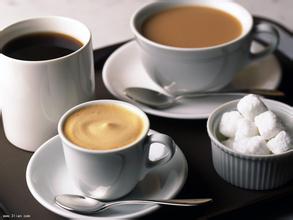Description of Brazilian Coffee Flavor introduction to the Grinding scale of the treatment method in the Manor area
Brazilian Coffee Flavor Description Taste Manor Region Processing Method Grinding Scale Introduction
With Brazil's coffee production sharply reduced, the market is increasingly worried about the impact of Brazil's continuing drought on coffee harvests in the next two years. Brazilian Coffee Federation predicts that due to the possibility of drought since March 2015, coffee production in Minas State will fall by 20% in 2015 compared with 2014, and the price of high-quality Brazilian coffee may exceed 500 reais (1 US dollar about 2.6 reais) per bag. According to Bloomberg, Brazil's coffee production is likely to suffer its first three-year decline since 1965. In the first week of 2015, coffee prices soared 12%, the biggest increase in 11 months. Arabica coffee futures on the ICE have surged 77% in recent times and are likely to keep growing. Citibank also said global coffee tensions could continue into 2016 due to Brazil's supply shortages. Brazil's Agricultural Economic Research Institute predicts that bad weather will hit Brazilian agriculture hard in the future. By 2020, Brazilian agricultural production may lose 7 billion reais due to climate reasons.
Brazil has been figuratively compared to the coffee world's "giants" and "kings." There are about 3.97 billion coffee trees, and small farmers now grow 75 percent of Brazil's coffee. Brazil has twice or even three times as many coffee producers as Colombia, which is the world's second-largest coffee producer.
Unlike in the past, Brazil's economy is now less dependent on coffee, which accounts for only 8 - 10% of GDP. Before World War II, Brazil accounted for 50% or more of the world's coffee production, and now it is close to 30%, but the country's influence on coffee worldwide, especially on coffee prices, is significant. For example, two frosts in 1994 caused a sharp rise in global coffee prices.
Coffee production has gradually become a science since the introduction of coffee trees from Guyane française in 1720. Before 1990, the Brazilian government strictly controlled the coffee industry, with both severe interference and price protection measures, and the state has always implemented minimum price protection measures for farmers, resulting in coffee overproduction. At one point before World War II, there were 78 million bags left in stock, which had to be burned or thrown into water.
Since 1990, when the free market opened up, the former Brazilian Coffee Authority (IBC) has been replaced by a non-investment administrative body of the state, the National Economic Association, which pursues a policy of non-interference and allows producers to negotiate directly with exporters. The business activities of exporters are supervised by government legislation, and the relevant departments register legal exporters.

Important Notice :
前街咖啡 FrontStreet Coffee has moved to new addredd:
FrontStreet Coffee Address: 315,Donghua East Road,GuangZhou
Tel:020 38364473
- Prev

Flavor description of Ethiopian Guji Coffee beans introduction to the production area of Grinding scale Manor
Ethiopian Guji coffee bean flavor description grinding scale manor production area coffee is Ethiopia's most important export cash crop and the main source of Ethiopia's foreign exchange earnings. Ethiopia's coffee exports account for about 3% of the world market, making it the eighth largest coffee exporter in the world. Coffee exports increased steadily from 58000 tons in 1990 to 1995-1996.
- Next

Flavor description of Colombian Ramon Coffee beans introduction of Grinding scale varieties in Manor production area
Colombian Ramon coffee bean flavor description taste manor grinding scale variety introduction regardless of yield or texture, Colombian coffee is first produced by Medellin, which is characterized by full granules, rich nutrition, moderate acidity and good balance. And rich aroma, soft and smooth taste. In addition to Medellin, Armenia is the capital of two neighboring provinces in the south.
Related
- Detailed explanation of Jadeite planting Land in Panamanian Jadeite Manor introduction to the grading system of Jadeite competitive bidding, Red bid, Green bid and Rose Summer
- Story of Coffee planting in Brenka region of Costa Rica Stonehenge Manor anaerobic heavy honey treatment of flavor mouth
- What's on the barrel of Blue Mountain Coffee beans?
- Can American coffee also pull flowers? How to use hot American style to pull out a good-looking pattern?
- Can you make a cold extract with coffee beans? What is the right proportion for cold-extracted coffee formula?
- Indonesian PWN Gold Mandrine Coffee Origin Features Flavor How to Chong? Mandolin coffee is American.
- A brief introduction to the flavor characteristics of Brazilian yellow bourbon coffee beans
- What is the effect of different water quality on the flavor of cold-extracted coffee? What kind of water is best for brewing coffee?
- Why do you think of Rose Summer whenever you mention Panamanian coffee?
- Introduction to the characteristics of authentic blue mountain coffee bean producing areas? What is the CIB Coffee Authority in Jamaica?

